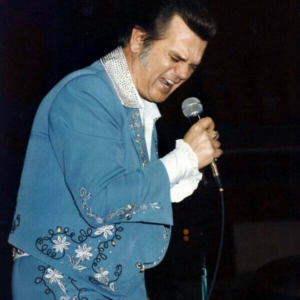
Released in December 1981, it became the lead single for Twitty’s album “Southern Comfort” and quickly resonated with audiences.
Twitty, a legend of the genre known for his rich baritone and smooth blend of rock and roll with country twang, wasn’t afraid to tackle deeper themes. “The Clown” is a prime example.
Background
The song’s origins are interesting. Credited to a quartet of talented songwriters – Wayne Carson, Brenda Barnett, Charlie Chalmers, and Sandra Rhodes – it wasn’t originally intended for Twitty. The story goes that Twitty heard a demo of the song and was immediately captivated by its raw emotion. He fought to record it, recognizing its potential to connect with his audience on a deeper level.
And connect it did. “The Clown” became a hit, reaching number two on the Billboard Hot Country Singles chart in 1982. But its legacy goes beyond chart success. It’s become a beloved classic, a song that continues to resonate with listeners of all ages.
The beauty of “The Clown” lies in its relatable narrative. The protagonist, a man putting on a brave face for the world, uses the metaphor of a clown to express his inner turmoil. He hides his heartache with laughter, a performance that masks the sadness he carries within.
Twitty’s masterful delivery elevates the lyrics. His voice, rich with experience and a touch of melancholy, perfectly embodies the character’s struggle. He sings of putting on a show, a constant act to hide the tears behind the painted smile. The listener can’t help but empathize with the protagonist, recognizing the universality of emotional facades we all wear at times.